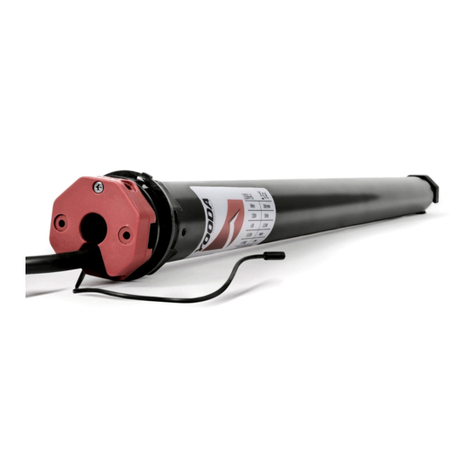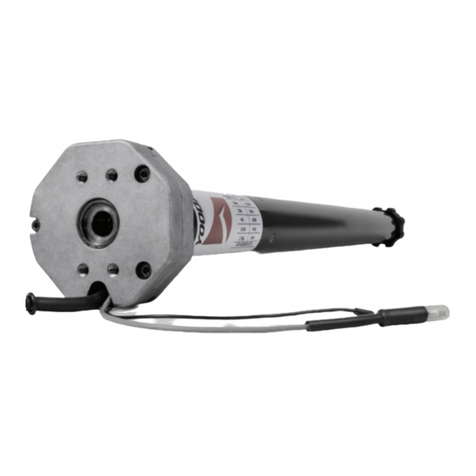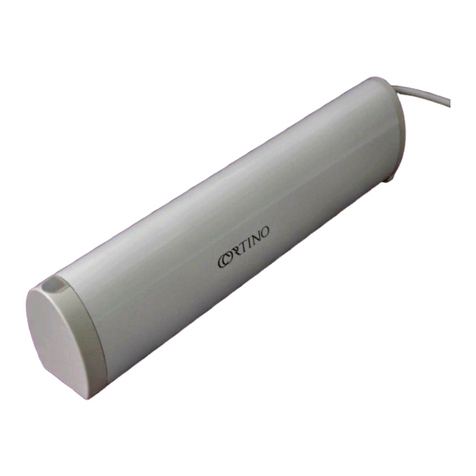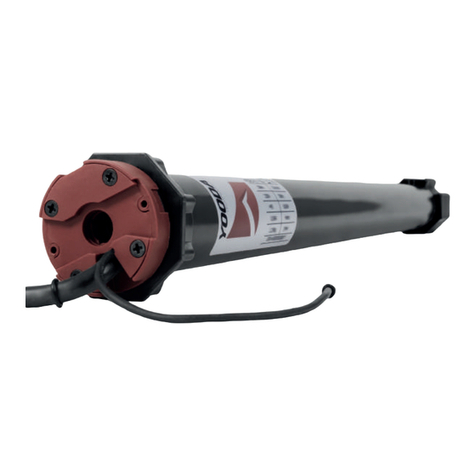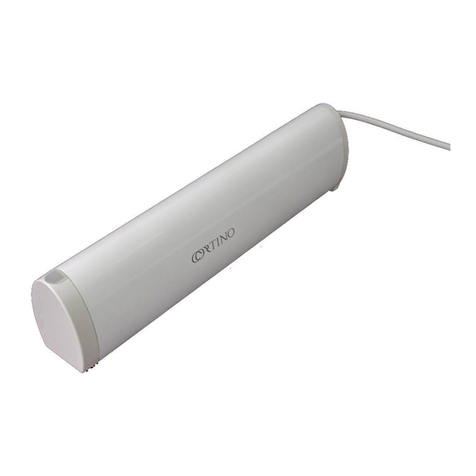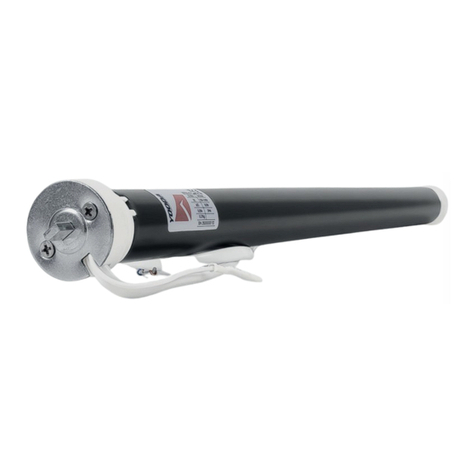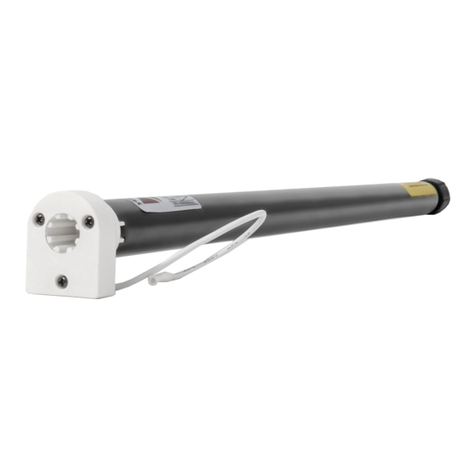
1. Longer than 4 seconds pause between series of button clicks during programming will cause device to switch off from
programming mode without saving any changes.
2. When the impulse mode is on, pressing the direction button, motor will make a short move.
1. When programming key-ring remotes that do not have additional P2 programming button the same function is substituted
with simultaneous push of STOP and UP buttons.
2. Longer than 4 seconds pause between series of button clicks during programming will cause device to switch off from
programming mode without saving any changes.
15. Activating impulse mode
7
Motor will
make a sound.
Press
programming button P2.
Press
programming button P2.
If the motor makes two sounds,
the impulse mode is ON.
If the motor will makes one sound,
the impulse mode is OFF.
Motor will
make a sound.
Motor will
make a sound.
Press
UP button.
Press
UP button.
Press
STOP button.
If the motor will make one short movement
up / down it means that the reaction 1 is started : after turning on
the power, motor will make a sound and up / down movement.
If the motor will make two short movements
up / down it means that the reaction 2 is started : after turning
on the power, motor will make up / down movement.
If the motor will make three short movements
up / down it means that the reaction 3 is started : after turning
on the power, motor will not move .
Press
DOWN button.
Motor will
make a sound.
17. Choosing a reaction to obstacle detected
16. Choosing the motor reaction after turning on the power.
18. Choosing obstacle detected operation mode
19. Programming key-ring remotes
If the motor will make one sound it means
that the reaction 1 is started: when an obstacle
is detected the roller shutter will stop.
If the motor will make two sounds it means
that the reaction 2 is started: when an obstacle is
detected the roller shutter will move in the
opposite direction.
Motor will
make a sound.
Press
programming button P2.
Press
DOWN button.
Press
DOWN button.
Motor will
make a sound.
If the motor performs a short up / down
movement, it means that
the motor is in mode 1 : The sensitivity of
obstacle detection is reduced to 20 cm from
the upper limit positions.
If the motor performs three short up / down
movements it
means that the motor is in mode 3: The
sensitivity of obstacle detection is reduced
along the entire height of the roller shutter.
If the motor performs two short up / down
movements , it means
that the motor is in mode 2 : The sensitivity
of obstacle detection is reduced to 4 cm
from the upper limit positions.
Motor will
make a sound.
Press
programming button P2.
Press
STOP button.
Press
DOWN button.
Motor will
make a sound.
Turn on power supply
or press programming
button on motors head
when power is on.
Motor will
make a sound.
Motor will
make a sound.
Motor will
make a sound.
Motor will make a
sound. Roller shutter
will make a short
up/down movement.
Press simultaneously
STOP and UP
programming buttons.
Press simultaneously
STOP and UP
programming buttons.
Press UP
button.


